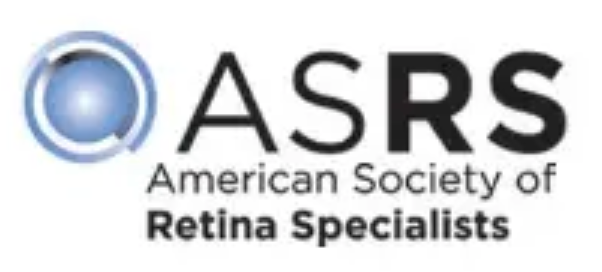Eyelid Lesions
What are Eyelid Lesions?
Eyelid lesions refer to abnormal growths, lumps, bumps, or sores on the eyelids. These lesions can vary in appearance and may be caused by various factors, including infections, inflammations, tumours, cysts, or even benign or malignant growths. Eyelid lesions can impact the eye's anatomy and health and the overall well-being of the individual.
Impact of Eyelid Lesions on Anatomy and Health
- Vision: Depending on the location and size of the lesion, it can obstruct the field of vision, leading to visual disturbances.
- Comfort: Lesions can cause discomfort, pain, itching, burning, or a foreign body sensation in the eye.
- Aesthetics: Lesions can affect the appearance of the eye and the surrounding area, potentially causing self-esteem or cosmetic concerns.
- Function: Eyelids play a crucial role in protecting the eye by blinking and distributing tears. Lesions can interfere with these functions, potentially causing dry eye or other complications.
Risk Factors for Eyelid Lesions
- Age: While eyelid lesions can occur at any age, they become more common as people age due to changes in skin texture, exposure to the environment, and other factors.
- Fair Skin: Individuals with fair skin are often more prone to developing skin-related conditions, including eyelid lesions, due to reduced melanin protection from the sun's harmful effects.
- Sun Exposure: Excessive sun exposure can increase the risk of developing lesions, as ultraviolet (UV) radiation can damage skin cells and increase the likelihood of abnormal growth.
- History of Skin Conditions: Individuals with a history of skin conditions such as eczema, psoriasis, or dermatitis may be at a higher risk.
- Family History: The risk might be increased if there's a family history of eyelid lesions or skin cancers.
- Immunosuppression: People with weakened immune systems may be more susceptible to various lesions, whether due to medical conditions or medications.
What are the Causes of Eyelid Lesions?
Eyelid lesions can have various causes, such as benign (non-cancerous) or malignant (cancerous). The causes of eyelid lesions can include:
- Infections: Bacterial, viral, or fungal infections can lead to the development of eyelid lesions. For example, a stye (hordeolum) is a common eyelid infection resulting from an oil gland's blockage.
- Inflammation: Conditions like blepharitis, which is the inflammation of the eyelid margins, can lead to the formation of lesions. Allergic reactions can also cause eyelid swelling and redness.
- Cysts: Cysts are closed sacs filled with fluid or semisolid material. They can develop on the eyelids due to blocked oil glands or hair follicles.
- Tumours: Both benign and malignant tumours can develop on the eyelids. Seborrheic keratosis and papillomas are benign growths, while basal cell carcinoma, squamous cell carcinoma, and melanoma are malignant eyelid tumours.
- Allergies: Allergic reactions to substances like makeup, skincare products, or environmental allergens can cause eyelid swelling, redness, and itching.
- Trauma: Physical trauma or injury to the eyelid can lead to the formation of lesions. This might include cuts, bruises, or damage to the eyelid tissue.
- Autoimmune Disorders: Certain autoimmune conditions like lupus or dermatomyositis can cause inflammation and lesions on the skin, including the eyelids.
- Sebaceous Gland Dysfunction: Disorders affecting the oil-producing glands in the eyelids can lead to the development of lesions, such as meibomian gland dysfunction.
What are the Symptoms of Eyelid Lesions?
Common symptoms may include:
- Swelling: The eyelid might appear swollen and puffy due to inflammation or accumulation of fluid.
- Redness: Inflammation and increased blood flow to the area can cause the eyelid to become red or pink.
- Pain or Discomfort: Lesions can be painful, itchy, or cause a burning sensation.
- Changes in Appearance: The eyelid lesion may look different from the surrounding skin. It could be a bump, sore, growth, or other irregularity.
- Tearing: Irritation caused by the lesion can lead to excessive tearing.
- Crusting or Scaling: Lesions can sometimes lead to the formation of crusts or scales on the eyelid.
- Changes in Eyelid Movement: Depending on the location and size of the lesion, it might interfere with normal eyelid movement.
What are the Types of Eyelid Lesions?
- Styes (Hordeolum): These are red, painful lumps forming along the eyelid's edge due to infected oil glands. They can be external (on the eyelash base) or internal (inside the eyelid).
- Chalazion: A chalazion is a painless, slow-growing lump that develops when an oil gland becomes blocked and inflamed. It's usually not caused by infection, unlike styles.
- Xanthelasma: These are yellowish plaques or bumps on the eyelids due to the accumulation of cholesterol-rich deposits. They are often associated with lipid disorders.
- Seborrheic Keratosis: Benign growths that can appear as waxy, raised lesions with a stuck-on appearance. They are brown or black.
- Papillomas are small, benign growths that often have a distinctive cauliflower-like appearance. They can occur on the eyelid or the conjunctiva (the membrane covering the front of the eye).
- Basal Cell Carcinoma: A common type of skin cancer that can occur on the eyelid. It usually appears as a raised, pearly bump that might have visible blood vessels on the surface.
- Squamous Cell Carcinoma: Another type of skin cancer that can develop on the eyelid. It might appear as a scaly, red patch or a raised, ulcerated lesion.
- Melanoma: A potentially serious form of skin cancer that can develop on the eyelid. It may resemble moles or pigmented spots and have irregular borders and colours.
How are Eyelid Lesions Diagnosed?
Here's how the diagnosis process typically works:
- Medical History: The doctor will ask about your symptoms, lesion changes, and overall health.
- Clinical Examination: The doctor will visually examine the lesion and the surrounding area, noting its size, colour, shape, texture, and associated symptoms.
- Biopsy: If the lesion's nature is unclear or if there's a suspicion of malignancy, a biopsy might be performed. During a biopsy, a small tissue sample is collected for laboratory analysis to determine whether the lesion is benign or cancerous.
- Imaging: In some cases, imaging studies like ultrasound or MRI might be used to assess the depth and extent of the lesion, especially if there's concern about its involvement with deeper structures.
- Specialist Consultation: Depending on the suspected cause of the lesion, you might be referred to a dermatologist, ophthalmologist, or other specialists for further evaluation and management.
How can Eyelid Lesions be Treated?
The treatment of eyelid lesions depends on the specific type of lesion, its underlying cause, and its potential for complications. Here are some common treatment options:
- Conservative Management: For mild eyelid lesions, such as small styes or chalazia, warm compresses and gentle eyelid hygiene might be sufficient to promote drainage and resolution.
- Medications: Antibiotics, antiviral medications, or antifungal treatments might be prescribed to manage infections or inflammations associated with certain eyelid lesions.
- Surgical Removal: Surgical excision or drainage might be necessary for larger or persistent lesions, such as chalazia or certain types of benign growths.
- Cryotherapy: Freezing the lesion with liquid nitrogen can remove certain benign lesions.
- Electrocautery: This involves using electrical current to burn and remove the lesion. It's often used for small, benign growths.
- Laser Therapy: Laser treatment can remove or treat certain eyelid lesions, particularly vascular or pigmented lesions.
- Radiation Therapy: In some cases of malignant eyelid lesions, radiation therapy might target and shrink cancer cells.
- Chemotherapy: Chemotherapy, either topical or systemic, might be employed for certain advanced eyelid cancers.
- Immunotherapy: For advanced malignant eyelid lesions, immunotherapy drugs might enhance the body's immune response against cancer cells.
- Reconstruction Surgery: After removing larger or more invasive eyelid lesions, reconstructive surgery might be performed to restore eyelid function and aesthetics.
What if Eyelid Lesions are Untreated?
If eyelid lesions go untreated, several potential complications can arise:
- Untreated eyelid lesions can grow in size, becoming more noticeable and uncomfortable and potentially causing vision obstruction.
- Many eyelid lesions can become infected if left untreated, leading to increased pain, inflammation, and potential spread of infection to other areas.
- Lesions can cause ongoing discomfort, itching, pain, and chronic irritation if not managed appropriately.
- Larger or more prominent lesions might affect the appearance of the eye area, leading to cosmetic concerns or impacting self-esteem.
- Untreated malignant eyelid lesions can invade surrounding tissues, spread to nearby lymph nodes, and potentially metastasise to distant body parts.
- Depending on the size and location of the lesion, untreated cases can lead to vision problems, including blurriness, double vision, or visual field obstruction.
It's crucial to seek medical attention if you notice any changes or abnormalities on your eyelids. Early diagnosis and appropriate treatment can help prevent complications and ensure the best outcomes for benign and malignant eyelid lesions. Always follow the advice of medical professionals and adhere to recommended treatment plans for optimal eye health and overall well-being.





